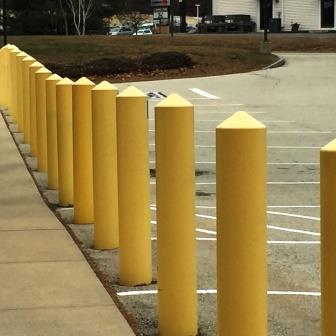
Do you remember when you rarely if ever heard about a car driving into a building?
Now, if you watch the news, you see cars driving into buildings quite often.
What’s with that?
Are people so side tracked by cell phones and other distractions they forget they’re driving a car? Do medical emergencies happen more often behind the wheel now?
It seems drug stores and convenience stores provide the most frequent target. Followed closely by residences.
Behind an Actual Car Strike Case – Responsibility
In a real case, 43-year-old Kimmy Dubuque had been out Christmas shopping with her husband. They decided to stop at a Cumberland Farms convenience store for coffee. Hubby dropped Kim off and went to park the car. As Kim opened the door, an employee approached from the inside with a bag of trash. So Kim held the door while the employee walked out, chucked the trash then the two walked back in.
At the same time an 81-year-old driver of an SUV stopped briefly, probably at a stop walk, then launched forward reaching speeds of 70 miles per hour. The SUV then crashed through the front door of the store, striking Kim and pushing her deep into the store. Kim died instantly. The store employee sustained injuries but survived.
Kim’s husband filed a wrongful death action against the convenience store chain. The suit papers claimed Cumberland Farms experienced hundreds of car strikes at its convenience stores. As a result, the suit claimed the store owners were on notice of the risks motor vehicles posed to customers. Thus, the suit claimed, the store could have prevented the death by installing protective barriers in front of the store.
Bollards are posts, consisting of steel tubes, designed and manufactured in varying sizes and strengths. Constriction workers bury the vertical barriers, often filled with concrete several feet deep in the ground. A base of concrete or a combination of concrete and steel provide additional reinforcement.
Is a store, which does not move, liable when a car, which does move, careens across the parking lot at high speed, slamming into the building and striking a customer?
Negligence Law – Foreseeability
Any negligence case, whether a relatively simple rear end car accident or complicated medical malpractice case requires proof of several basic elements. To be held liable a “bad actor” must be shown to have a duty to the injured person. The duty must be breached, and that breach of duty must be shown to cause harm. Above all, the scenario presented must be held to be foreseeable. If deemed unforeseeable a case can be dismissed, never seeing the light of day in a trial.
Cumberland Farms contends that the accident was random and unforeseeable as a matter of law. After all, the speeding car slammed into the store from the adjacent street at “highway-like” speed. The issue of foreseeability, they argued, required the case be dismissed.
But the convenience store chain saw an average of one car strike per week. Between 1990 and 2010 there had been hundreds of vehicles striking the convenience chain’s buildings. Store employees started calling the incidents “car strikes”. At the same time, none had ever happened at this store.
Cumberland Farms attorneys cited case law holding that the convenience store was not a guarantor of the safety of persons lawfully on its premises. The law requires those in the store’s position only to take steps to guard against reasonably foreseeable risks of harm, defined as those risks that it knew or reasonably should have known about and against which it could have employed reasonable preventive measures.
What is a Foreseeable Accident?
An internal memo warned that car strikes were becoming costly “and were eventually going to result in bodily injury.” Most noteworthy at some point in the 1990s a car failed to stop as it crossed one of the convenience store’s parking lots, kept going, and crushed a man on a pay phone.
In the time period leading up to the accident there were no regulations, ordinances or other laws on the books requiring installation of bollards at locations such as convenience stores or other commercial properties.
An expert for the plaintiff testified that a system of bollards or other barriers could have been installed that would have prevented accidents of the type that caused a death in this case. The cost, it was said, would not have exceeded $20,000.
Cumberland Farms argued that no testing or calculations established that the barriers would have withstood the impact of the vehicle in this case. Company attorneys called the accident “anomalous”. If a random accident, store attorneys called the claim legally defective for lack of the legal requirement of foreseeability.
Certainly noteworthy, the law does not require that a defendant foresee the precise manner in which injuries take place. Foreseeability is determined from all of the facts and circumstances. As such, the issue presents a jury question.
In the months prior to this accident convenience store management approved a $2 million dollar plan for installation of bollards at 200 store locations. Placed along the walkways in front of the stores, the bollards would protect people and property. Stores getting the bollards had to have two or more car strikes or be among the highest revenue generators. The store where Kim died fit neither of those categories.
Last Word in a Long Accident Case
After a nine day trial the jury returned a verdict against the convenience store chain for the car strike which occurred at their Chicopee, Massachusetts store. The $32 million dollar verdict was later reduced to $20 million and upheld by the Appeals Court of Massachusetts in the 2018 case of Dubuque v. Cumberland Farms.
Calling it a “long and complicated case” the Appeals Court rejected company attempts to overturn the verdict. The appeals court held that the question of whether or not the accident was foreseeable was correctly submitted to the jury. The court cited a long line of negligence cases holding that foreseeability can be legally taken away from the jury only where no rational view of the evidence would warrant a finding of foreseeability.
Even the court called the case long and complicated. Such a finding may or may not ever happen again. Unique facts in each case form the basis for jury deliberations and intense argument by attorneys on both sides.
The author of this article, Attorney Andrew D. Myers, represents those injured in accidents in Massachusetts and New Hampshire. If you have been injured in an accident the Law Offices of Andrew D. Myers can help. Contact us through this website or call.
Here are some recommendations on what to do after an accident.
Visits: 140




